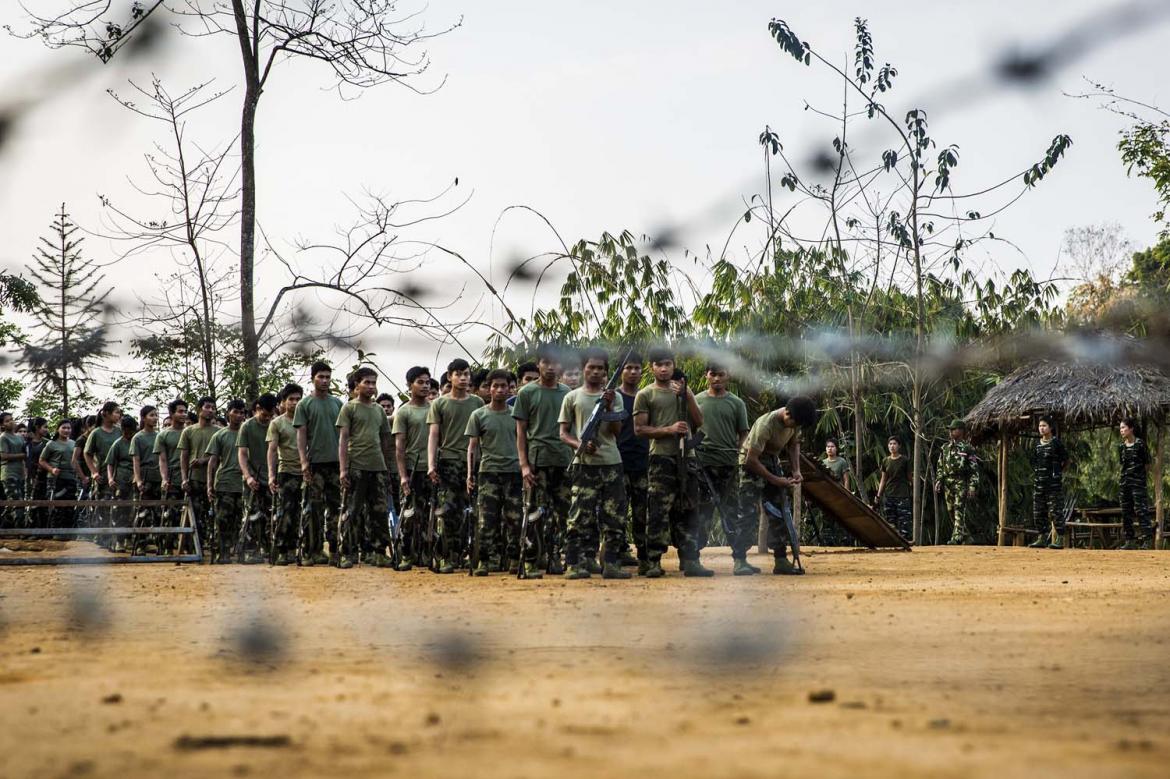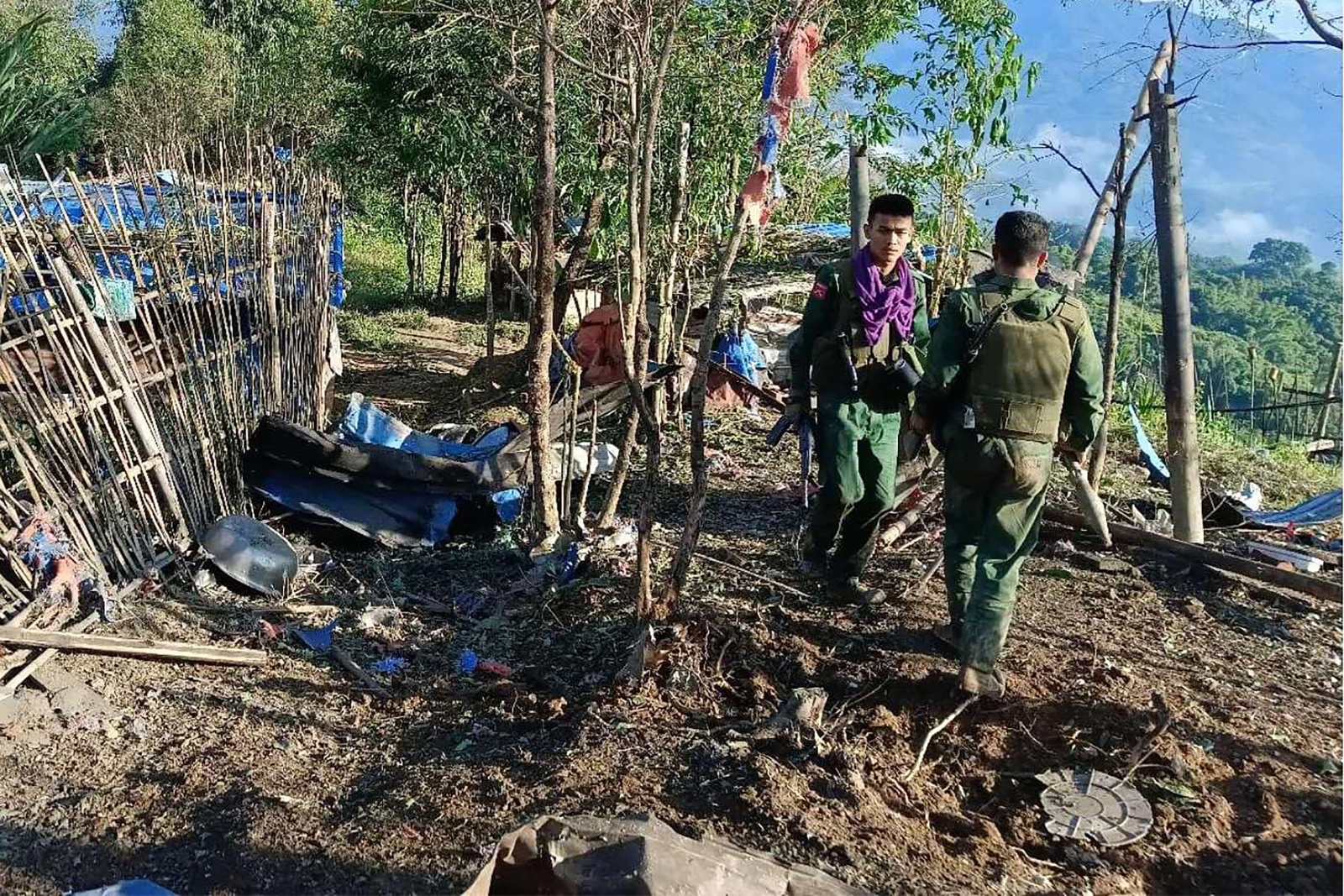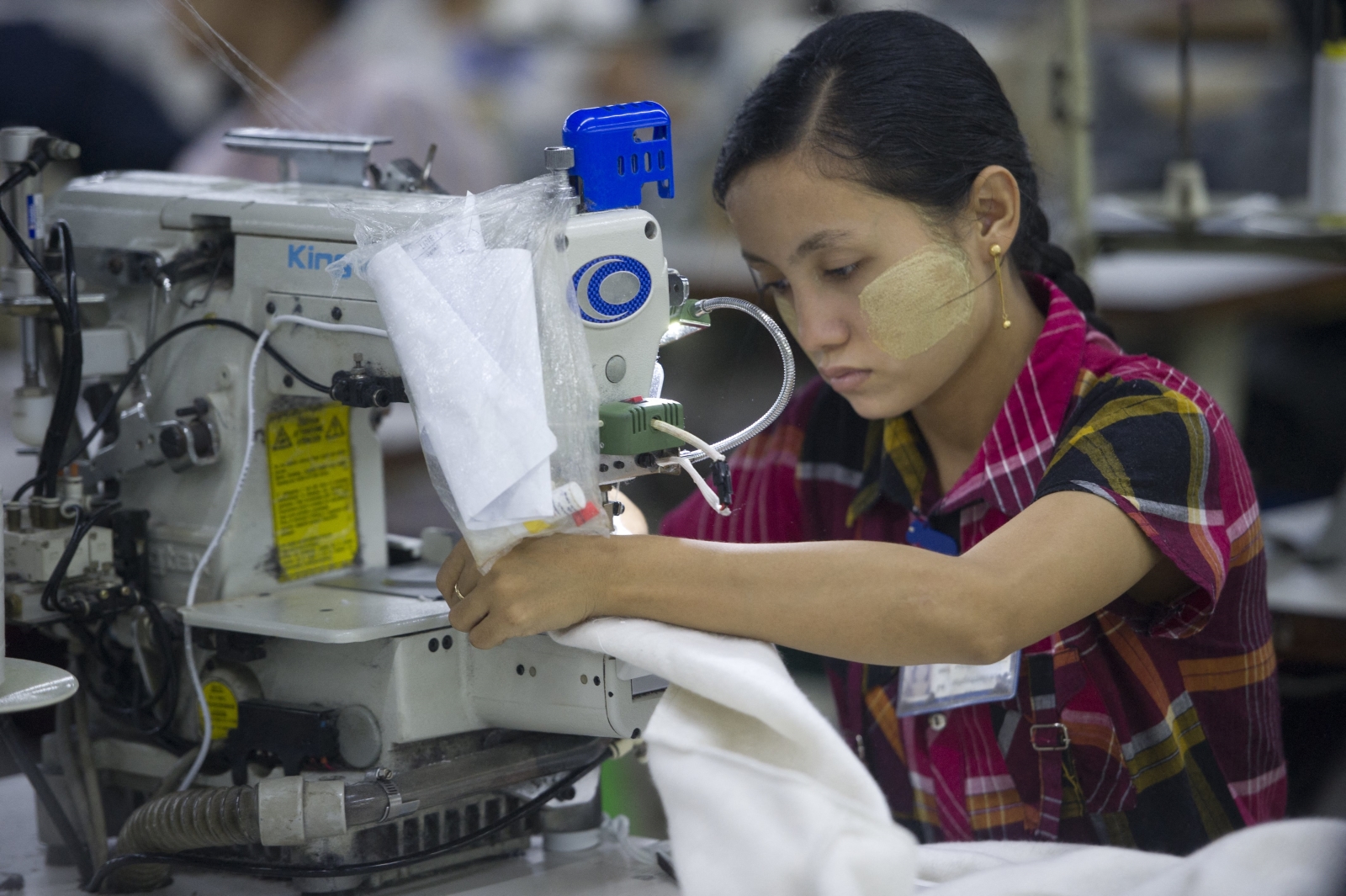By FRONTIER
The Ministry of Planning and Finance is preparing to launch an interactive and publicly accessible online “project bank” containing priority initiatives that have been screened and approved by the government for their positive impact on economic and social development.
The initiative aims to overhaul the way in which ministries identify and tender projects, and will provide a new framework for public-private partnerships and enable the private sector to invest in state assets.
Deputy Minister for Finance and Planning U Set Aung spoke to Frontier about the alignment of the project bank with the Myanmar Sustainable Development Plan (2018-2030), its likely impact on government procurement and how it dovetails with other state-led initiatives, such as the China-Myanmar Economic Corridor.
What is the project bank and why is it being developed?
Support more independent journalism like this. Sign up to be a Frontier member.
It is really important that the strategic action plans identified in the Myanmar Sustainable Development Plan (MSDP) are implemented in a proper way. The project bank is a very significant mechanism for implementing these plans.
The MSDP policy document doesn’t just contain policy directions and trajectories, it also contains policy implementation metrics, in which 251 strategic action plans have already been identified. These action plans must be further broken down into implementable projects and programmes.
The projects and programs will go through different assessment systems in order to find out whether they are relevant to the strategic plans of the country. It is very important that all projects [in which the government is involved] go through rigorous, stringent assessments. Only those that pass will qualify to be implemented through multiple financing mechanisms.
How are government ministries involved in this process? What, for example, will they now have to do differently?
In the past, ministries came up with sectoral plans each year that aimed to improve their economic sectors. Now we are trying to transform these sectoral plans and systems into strategic plans and systems.
Ministries and government agencies will have to identify much more strategic projects and programmes [for inclusion in the project bank and that may be eligible for private-sector financing] that will not only improve their respective sectors, but will also be aligned with the strategic actions plans identified in the MSDP.
Has the process of identifying projects already started?
The ministries have identified quite a few projects – hundreds of projects have already been submitted to us and all of these are now going through our rigorous assessment process. It’s a work in progress; after we have completed all these assessments, we will have selected a number of projects. After that, we will conduct preliminary feasibility study analysis in order to obtain more information about these projects, and then once we have developed a business case for each of them, they will be included in the project data bank.
All the projects that government agencies are planning to develop, along with specific information about these projects, will be accessible to the public, enhancing transparency and predictability as the projects are developed.
How will these projects be financed?
Of these projects some are to be implemented with the government budget and some with development assistance, so it’s going to be easier for development partners to find strategic projects that have already gone through a rigorous and stringent assessment and that are found to be a priority for the nation.
There are also many projects that will be eligible for public-private partnerships, so that the private sector can tap in. We will come up with some mechanisms to make these PPP projects … much more bankable, so it’s going to be much more attractive to the private sector.
If the private sector can invest in commercially viable, bankable projects it will be a win-win solution for the government, because projects would be much more effectively developed by the private sector and at the same time our fiscal burden can be lessened if we do it properly.
Will legacy projects that have been approved and have not yet started, or those that have stalled, be included in this process?
One of the purposes of this project bank is to find appropriate financing mechanisms. If legacy projects have found appropriate financing mechanisms they don’t need to be included in the project bank but some projects, some very strategic projects that require financing mechanisms, can still be included, so we can find more sophisticated financing mechanisms for them.
How does the project bank dovetail with other initiatives such as the China-Myanmar Economic Corridor?
The China-Myanmar Economic Corridor and other initiatives are very important for us and it is imperative that the projects and programmes in these initiatives are identified in such a way that they are relevant to Myanmar. That is why we are going to use the same rigorous and stringent assessment process to identify the real strategic projects that can be considered a priority before going ahead with implementation particularly in each initiative.
So the CMEC projects will be included in the project bank?
All the projects will be included because the project identification process is really important and can be efficiently done only by quantitative and qualitative scoring systems, which are introduced in the project bank process.
We understand the private sector can also submit proposals for inclusion in the project bank. How would that work?
The private sector can come up with unsolicited proposals to implement the projects they want to develop. But it is really important that these projects go through a competitive and transparent open tender process before they are eligible for government support.
In addition to that, we have [identified] some state-owned enterprises to be included in the project bank, for their possible privatisation or equitisation, particularly to turn some state-owned enterprises into PPPs.
Will the projects in the project bank be subject to parliamentary approval?
We are not actually creating something completely new. What we are trying to do is enhance the coordination among government agencies and identify whether existing projects are strategic and if they are a priority. Then we will pool all the data in the databank so that we can enhance transparency and predictability and strengthen competitiveness through an open tender system.
All the existing systems will still apply: if parliamentary approval is required then parliamentary approval is going to be sought. If cabinet approval is required then cabinet approval will be sought.
What do you see as the major challenges to implementation?
The major challenge is to convince all the stakeholders to understand more about strategic planning. They are much more comfortable with the sectoral planning system because we have been practising this for decades in the past. This is a transition time, which is why we have to employ a lot of training and capacity building and [encourage a] mindset change.
When will the project bank be made available to the public and what will be the mechanisms for community engagement and public participation?
I think within a few months we will have qualified strategic priority projects in the project bank and then we are going to start asking the private sector to participate. Since the project bank aims to enhance transparency and competitiveness it is really important that project implementation is done in accordance with international practices.
The monitoring system is going to be enhanced; it’s going to be tremendously strengthened. We’ve got different monitoring systems for outcome assessments, impact assessments, output assessments, with valid indicators that have been developed so we are very optimistic about the project bank and its implementation through competitive and transparent open tender systems.
The project bank: key points
A November 30 notification from the President’s Office explains in detail how the project bank will function. Established by the Ministry of Planning and Finance (with help from the World Bank, the UK Department for International Development and the Asian Development Bank) its primary aims are to help the government implement the Myanmar Sustainable Development Plan in a predictable and transparent way, to improve coordination between ministries, and to make projects attractive to local and international investors.
Here are some of the key points in the notification:
- The MoPF will establish the project bank, determine which projects will be included, and make the project bank accessible via an interactive, web-based, publicly accessible database.
- Government agencies and departments will be responsible for proposing projects that will be financed in one of five ways: with the state budget; with development assistance; in partnership with the private sector through PPPs, including unsolicited proposals; through the transfer of state-owned enterprises, in part or entirely, to the private sector; or through a combination of these.
- Once projects are proposed they will each be screened based on criteria including their strategic value. If they pass the screening process, the MoPF will determine the most appropriate source of funding.
- A PPP Centre will be established within the MoPF to strengthen capacity within government departments to identify, develop, procure, implement and monitor the projects.
- The PPP Centre will also be responsible for developing concrete criteria on which government support might be provided for PPP projects, such as government guarantees or viability gap funding, neither of which have been employed in Myanmar before.
- Any unsolicited proposal by a private party to a government agency with a value over K2 billion must be presented to the PPP Centre, except proposals for the development of greenfield projects in the energy and mining sectors.
- The government agency will then launch a Swiss Challenge tender process, unless the PPP Centre agrees that this is unnecessary. Only projects that have been tendered will be eligible for financial support from the government.
- PPP projects exceeding $100 million will require approval from cabinet.
- Environmental and social impact studies for all the proposed projects have to comply with Ministry of Natural Resources and Environmental Conservation regulations, and the government will be responsible for compensating and/or resettling those who are impacted.







